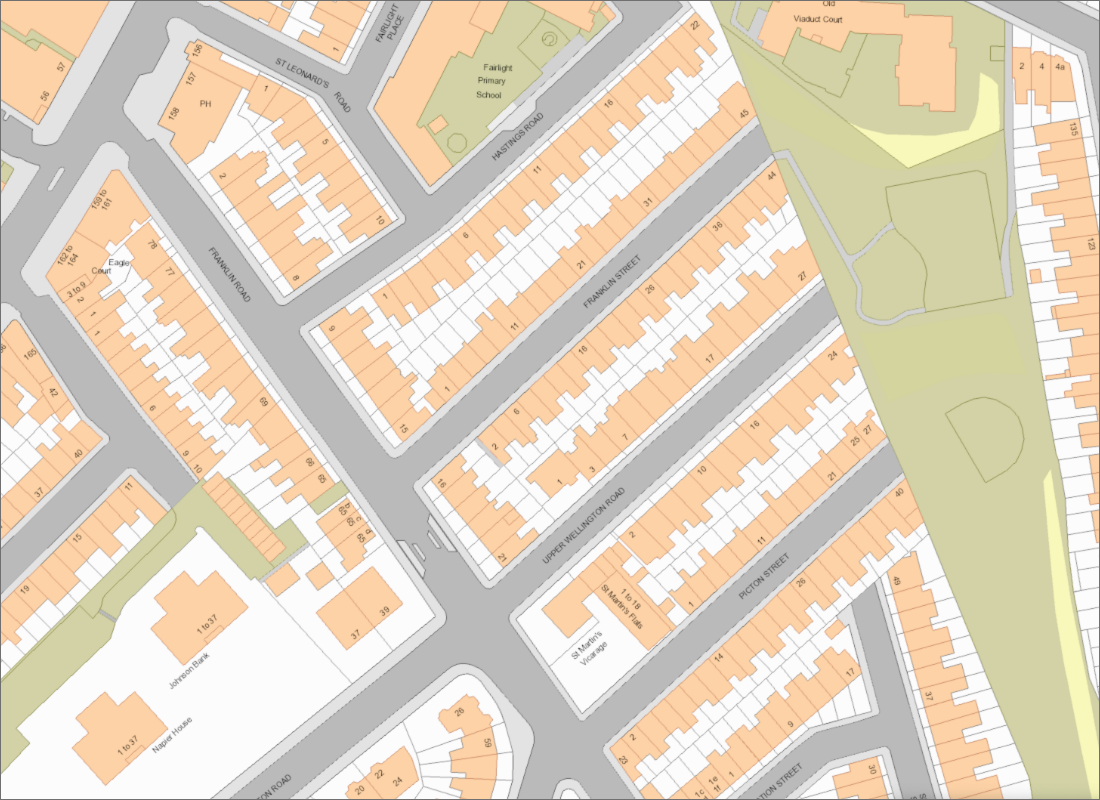Property Index
Taking stock
The Property Index is a database of location and property-based information which centres on the Unique Property Reference Number (UPRN). All UPRNs in the Local Land and Property Gazeteer (LLPG) have associated property classifications, such as: residential or commercial; terraced, detached or semi-detached; care homes, hotels, etc. By joining data using the UPRN, we are able to pull data from property-centric data sources such as: HMOs, Housing, etc and create a 'profile' of a property.
This means that we can search for a UPRN and know whether it is listed as an HMO or social housing. It also means that we retain the property profile even if there are no residents recorded as occupying the property. This is a critical difference between the Customer Index and the Property Index - with the former depending on occupancy at an address.
By comparing the Customer Index with the Property Index, we are able to see a total list of all possible residential properties in the City and of those, which are currently occupied or vacant.
Key project details
- 139,431 residential properties in the City
- 4,562 empty properties in the City
- 37,687 tenanted properties in the City



Location based data
Identifying data sources.
The critical difference between the Customer Index and the Property Index is the identification of data which remains 'true' about a property, even if it isn't occupied. On a granular level, this would include the type or usage of a property, such as whether it is a care home or a residential flat. Although some of this classification is contained within the LLPG, other details are held in service systems and external databases. For example, a UPRN might identify a building as commercial, whereas the Northgate data for Business Rates would indicate whether it is a shop or an office. Equally, a UPRN might indicate that a building is a residential freehold, but by adding HMO licensing data into the Property Index, we are then able to see that the building will be occupied by tenants rather than owner/occupiers.

Using insight to design the solution
Assumptions and analysis.
Much like the Customer Index, the Property Index is a patchwork of datasets which together provide a total picture of a property profile. The UPRN relates to a string address and postcode (1 Brighton Road, Brighton BN1 1BB), and this in turn relates to a Unique Street Reference Number (USRN) and a ward. This means that any datasets that contain any of: postcode, street name, ward reference can be appended to the Property Index to gain greater insight about other geographic data. We have recently added the CACI data to provide information on property prices and salaries and will continue to add more location-based data over the next few months.
The UPRN is to property, what a NINO is to an individual https://www.geoplace.co.uk/addresses-streets/addresses/the-uprn
As well as the valuable democratic participation side of these projects, the work undertaken by the Digital Customer Programme will also provide further savings to the Electoral Services department during the annual canvass as digital avenues can be used more often. Data provided by the project has helped ensure that nearly 100,000 properties in the City can be taken down the lighter touch annual canvass route, therefore releasing resources to focus on areas where changes to occupancy are more likely. The savings made by using digital communications will help offset the cuts in Individual Electoral Registration funding that the Electoral Registration Officer will be receiving from 2020/21.
Effective insight
Comparing people and properties.
One of the biggest benefits of the Property Index is realised when it's compared against the Customer Index. It is in effect, like a stock check. The residential UPRNs in the LLPG are the total count of possible residential properties in the City. By comparing people listed in the Customer Index with the residential properties in the Property Index, it is possible to identify:
- Empty properties - any property without a person listed in the Customer Index as an occupant, is an empty property
- Rental properties - we can determine the probability that a property is a rental property by looking at the frequency of occupant names at an address in datasets such as council tax and parking. This will add a flag against the UPRN in the Property Index to indicate that this is a rental property
- Social housing - the data held in the Housing system will identify a UPRN as a council-owned property
- HMO properties - data held in the HMO licensing system will identify UPRNs that have licences in place
This property-based information will incrementally improve operational processing, as well as customer experience. We currently have forms and applications which require users to identify whether they are private rented tenants, or social housing tenants. This often indicates eligibility for a service or a reduced payment for transactions such as car parks and garages. By utilising the Property Index data, we would be able to determine some of these key characteristics by the address alone.




